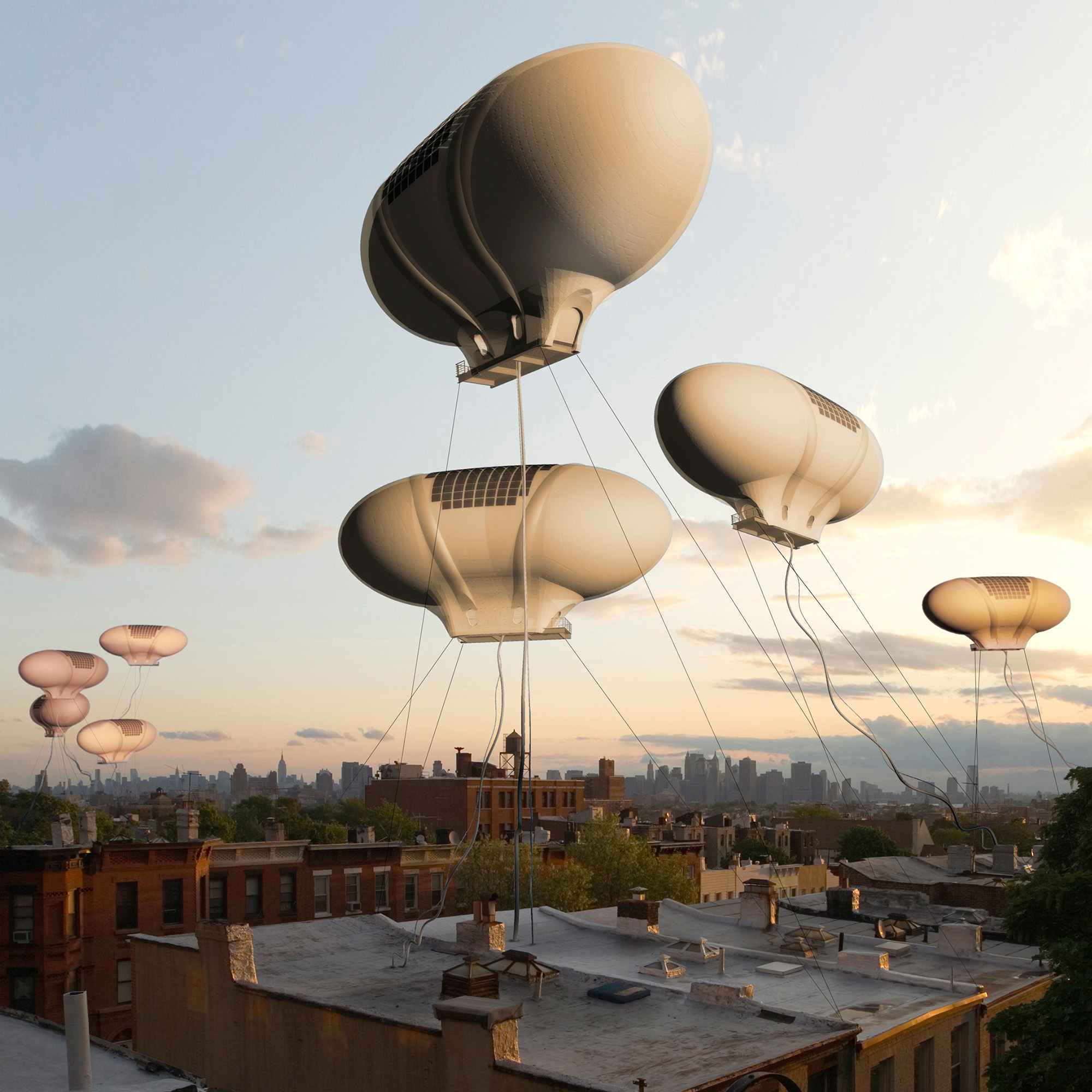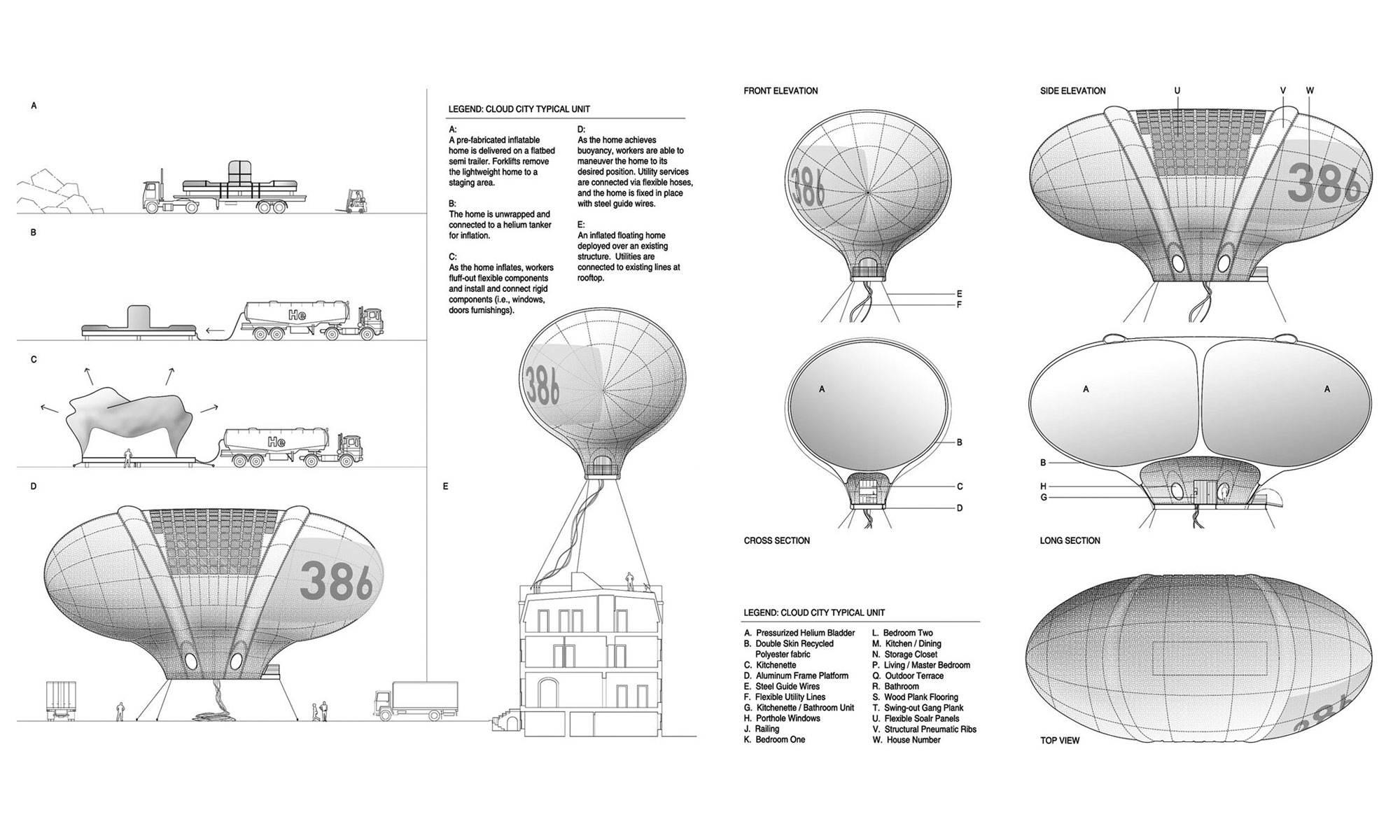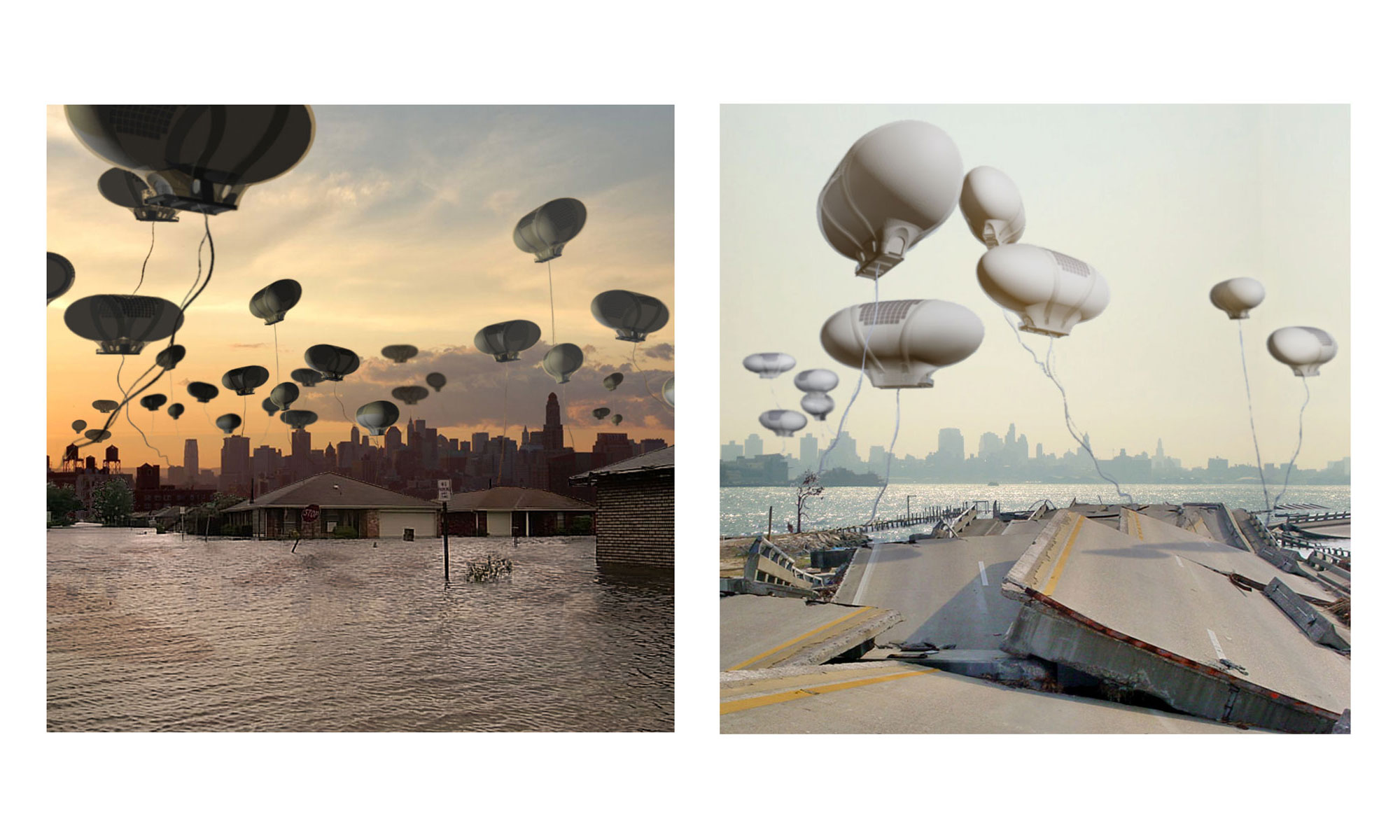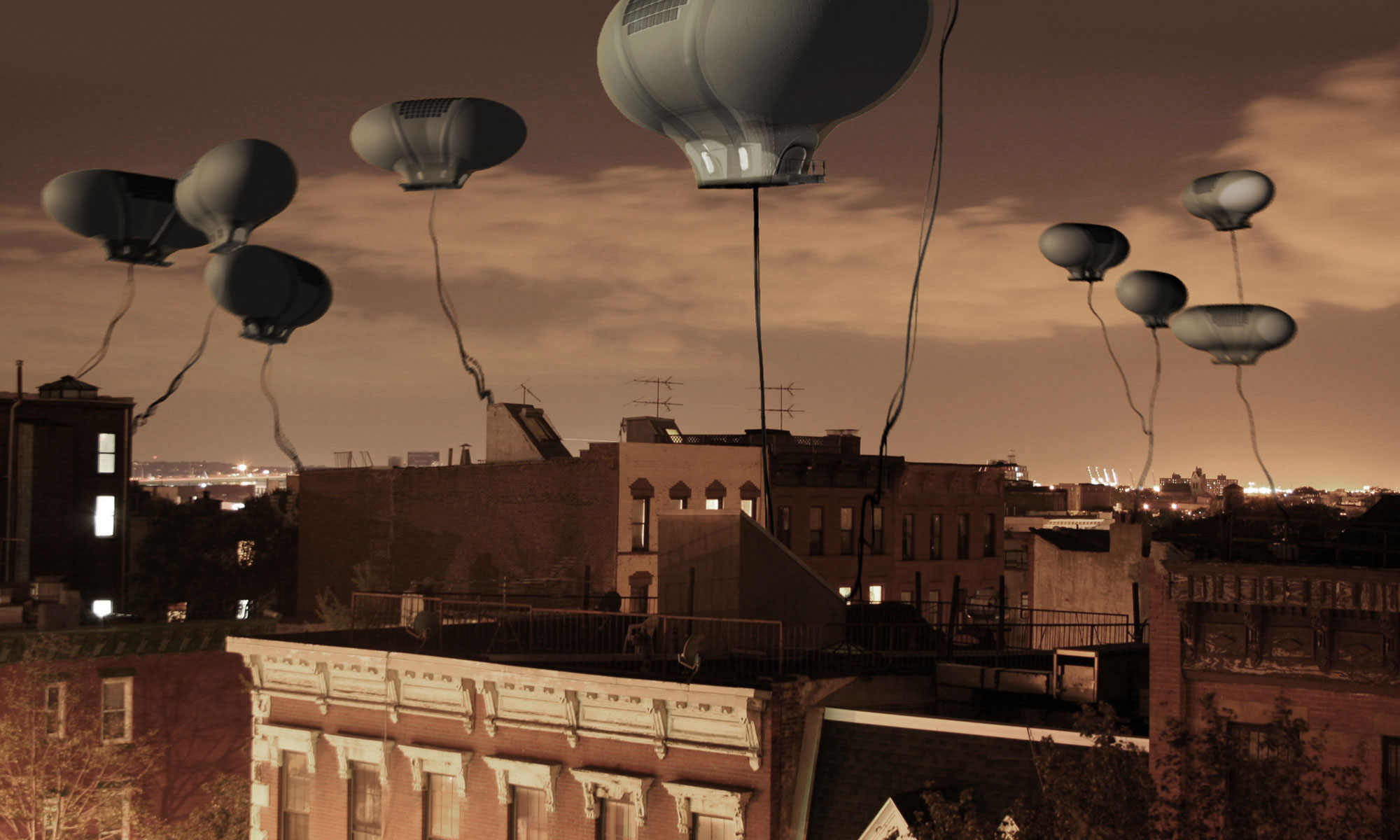
Though perhaps an unusual proposal, CLOUD CITY is literally an uplifting experience that will allow communities to remain intact as they pull themselves out of the rubble. CLOUD CITY is a continuation of the dream captured in the built form of the Empire State Building, the spire of which was constructed as a landing platform for dirigibles. The dream of floating amongst the clouds above a magical and ever changing cityscape.

The concept for CLOUD CITY is based on the desire to allow people to remain in their community as close to their homes as possible. This would allow residents to remain an active part in the rebuilding of their community, while fostering a sense of security. The way to achieve this is to literally float a layer of provisional housing over the damaged or destroyed portions of the City. Once airborne, the floating homes allow construction crews below to work unimpeded, speeding up the recovery effort. This in turn reduces cost overruns and unnecessary delays.

Inflatable homes would be pre-fabricated and stored in warehouses for deployment as required. Each home consists of three basic components: an inflatable bladder, a rigid core, and a metal and wood platform. The bladder would consist of two compartments, filled with pressurized helium (which is non-combustible). The pressurized gas would give shape to the tailored and stitched fabric shell, creating an open living space within. Made from recycled polyester fabric, the balloon has a large surface area suitable for mounting of flexible solar panels for generating electricity. Within this living space is a rigid core which contains an efficient kitchenette and bathroom, along with plumbing and electrical services. The 300sf living space is open, and can be configured in many ways, with up to three bedroom spaces suitable for a family of four.
The homes can be rapidly deployed with minimal site preparation. They are intended to ‘plug in’ to existing utility services, and can be deployed by a team of four workers in roughly an hour. Once in place, access to the floating home is gained by lowering the entire home to the anchorage point (either an old rooftop, or temporary boardwalks). A keyed hand crank winch would guide the home down to allow for the mobility impaired to gain easy access via a gangplank. The homes are minimally appointed, in an effort to reduce overall fabrication costs. They are fully reusable, and can be stored indefinitely.

Location: Brooklyn, NY
Date: February 2008
Project Team:
(with Studio Lindfors)
Principal: Ostap Rudakevych
Collaborators: Erik Jostock, Gretchen Stump
